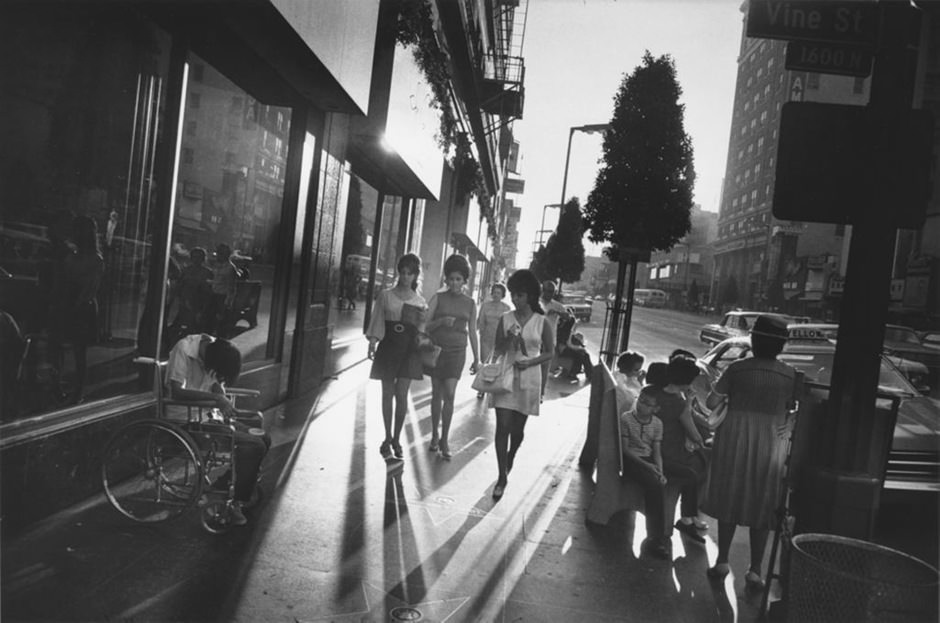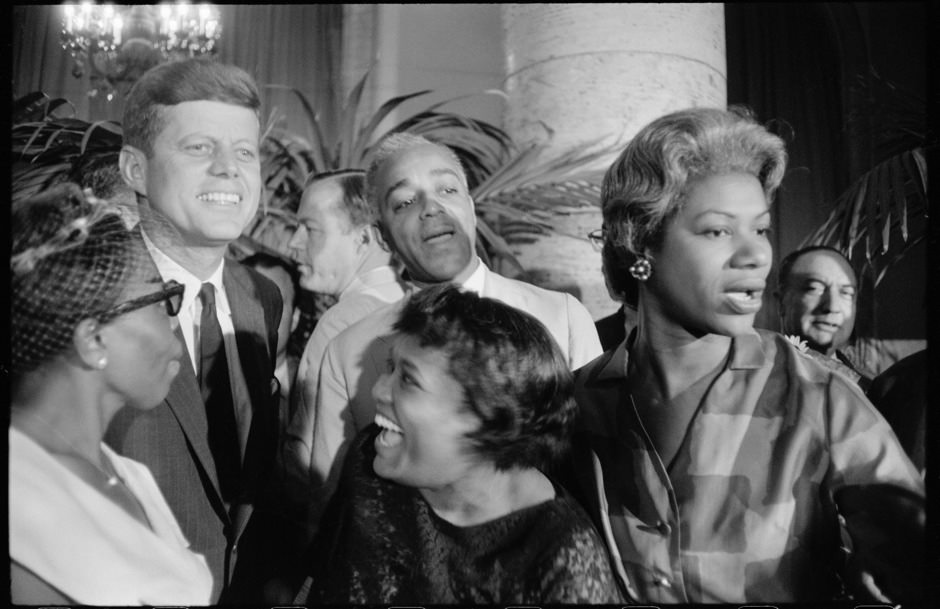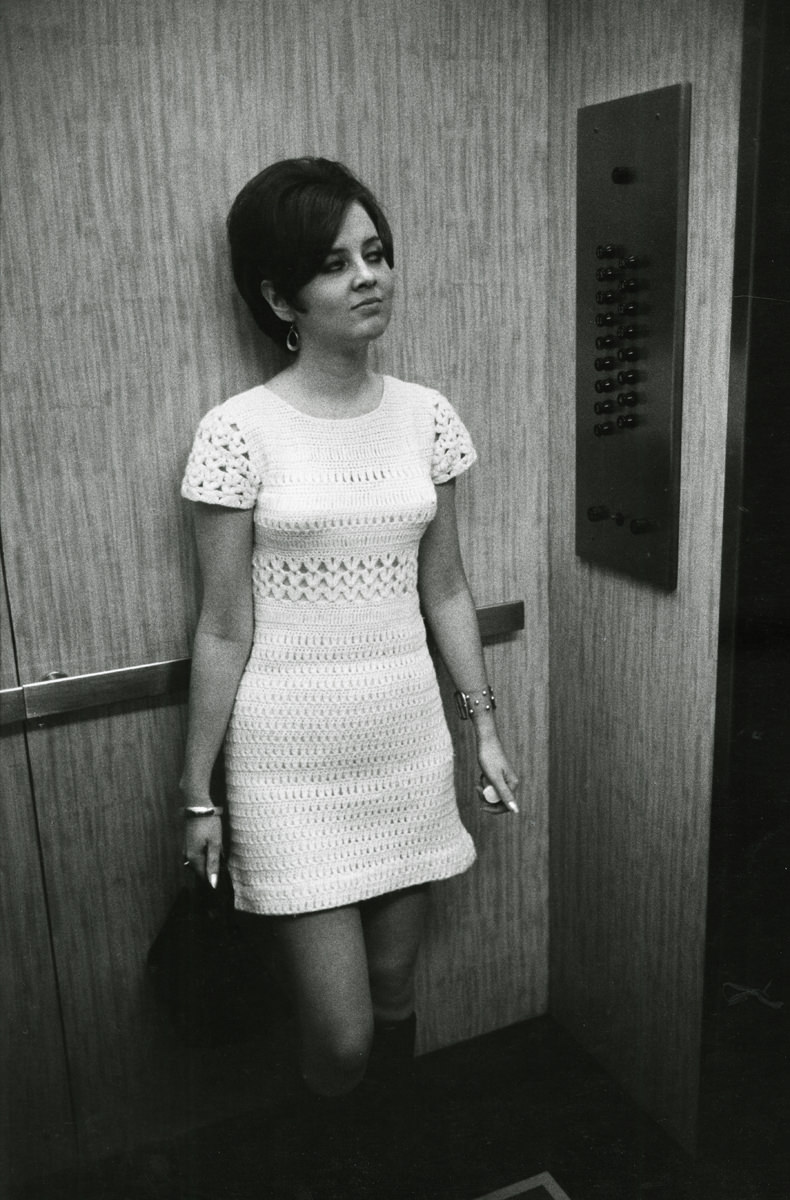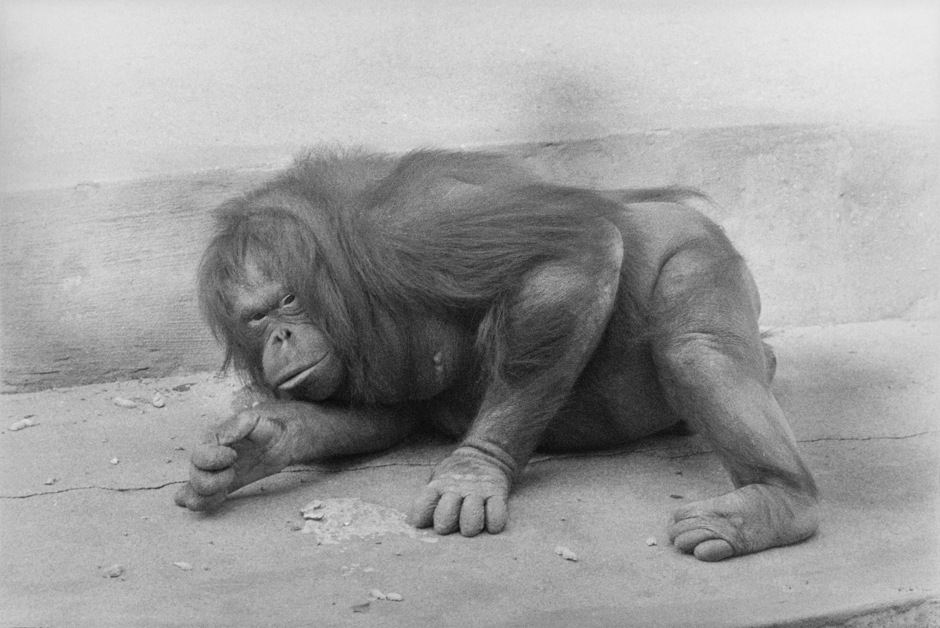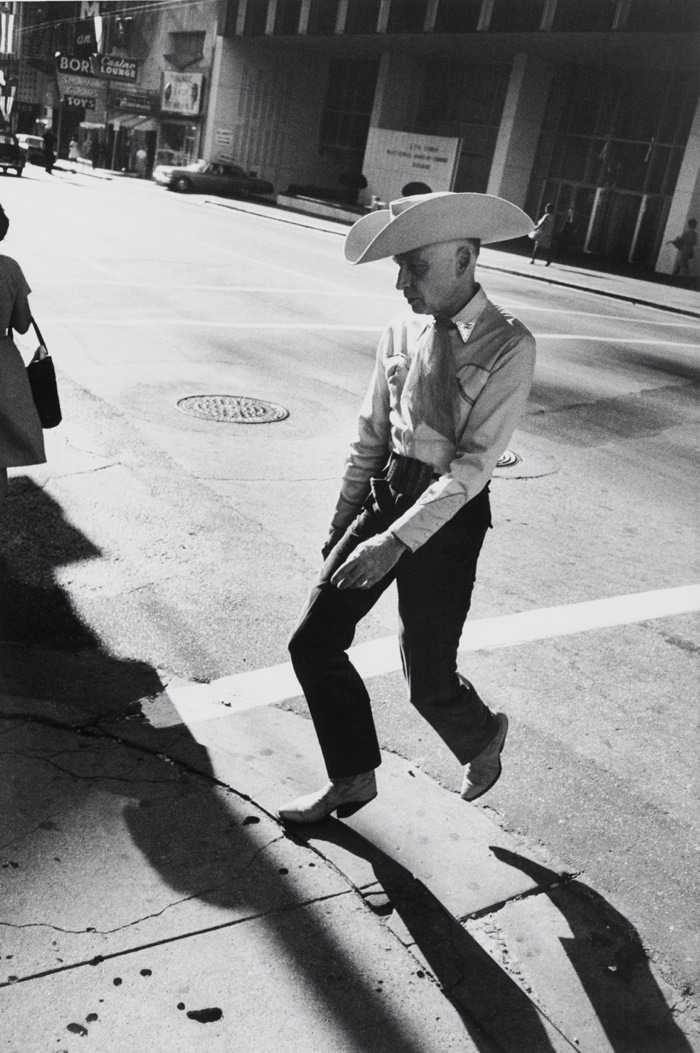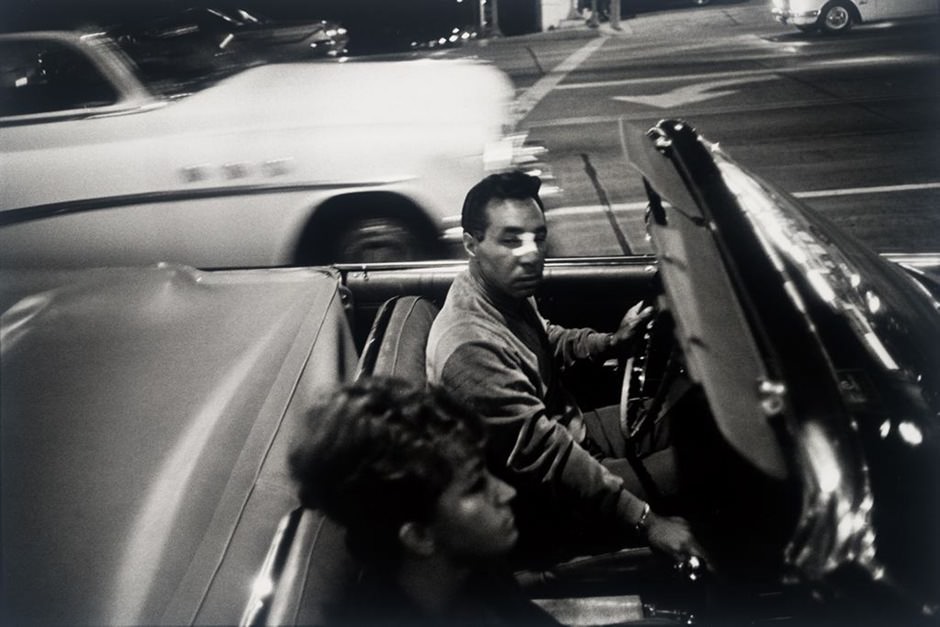Garry Winogrand’s photographs created one of “the fullest and most engaging pictures of the United States in the second half of the twentieth century,” writes Peter Galassi in the October 24, 2013 issue of The New York Review. The first retrospective of Winogrand’s work in twenty-five years, which opened at SFMOMA last year, is now on view at the Metropolitan Museum of Art. Curated by Leo Rubinfien, Erin O’Toole, and Sarah Greenough, it presents examples of Winogrand’s most famous photographs alongside newly printed images from throughout his career, including many from his late work in Los Angeles, left unfinished when he died of cancer in 1984 at the age of fifty-six. Photographer Dominique Nabokov—whose own pictures appear regularly in The New York Review—spoke with Eve Bowen about the exhibition and the ways in which Winogrand “pushed photography to the limit.” What follows are excerpts from their conversation.
Garry Winogrand was one of the last great street photojournalists. He was like a walking camera: by the time he died he had taken nearly a million photographs. In the sheer volume of pictures he took, he really pushed photography to the limit. Videos and movies have taken over today, and he’s very close to that world where you shoot nonstop—he used his camera like a Kalashnikov.
He was a populist photographer, a real egalitarian, and his photographs of people on the street show that any face can be interesting. I think of his photo of a cowboy walking down the street in Dallas, seeming to levitate. His photographs of political rallies are similar. They focus less on the spectacle of the politicians than on the crowds and their reactions to the scene before them. His photograph of John F. Kennedy at the 1960 Democratic National Convention is like an éventail, a fan showing a spectrum of expressions: one person is suspicious, you don’t know what he’s thinking, another is smiling, but they’re all surrounding Kennedy, and he’s basking in his own beauty.
Winogrand’s style is, in a way, the most difficult style, because the world he depicts is often so quotidian that you yourself wouldn’t stop to look at it. If you think of the work of Josef Koudelka, Diane Arbus, Robert Frank—or Eugène Atget, who documented the streets and houses of Paris—each picture is a work of art. Not so with Winogrand. His photographs of the street, the suburbs, airports, the rodeo—they show a piece of American life where, to his credit, there’s no desire to be aesthetic, to be lovely: he’s just there, he records.
I first encountered Winogrand’s work when the curator John Szarkowski organized “Figments from the Real World,” a retrospective at MoMA in the late 1980s. I was in my early days as a professional photographer, and I knew the work of Henri Cartier-Bresson, Walker Evans, Koudelka, among others. In Winogrand’s photographs in particular, there was an immediacy, an agility—it didn’t seem complicated. I really liked what he did because it seemed to me I could do it. It reassured me that I could be a photographer.
When you see a photograph by Cartier-Bresson, you see what he called a “decisive moment”: an image, captured in a fraction of a second, that perfectly distills the significance of an event. In Winogrand’s photographs you see a story, or at least an implication of a story. He often shows people looking at something, but we don’t know what they are looking at. At the Met, there’s an early photograph of a sailor walking in the snow with his bag: Is he going home or to the navy yard? We don’t know. There’s another photo, of a secretary in an elevator: maybe she’s thinking of who she’s seeing tonight—it makes you think of Billy Wilder, Shirley MacLaine, The Apartment. And then there is the picture of a small child standing alone outside a suburban house in Albuquerque, New Mexico. You wonder, where is the mother? The child could be kidnapped, he could disappear. The immensity of it, the unhappiness, the isolation you feel in that image—it’s extraordinary.
Winogrand is sometimes criticized for not having a point a view, for not taking a stance with his photography in the way that, say, William Klein did. I don’t agree with this. If you take a picture, you express something, and Winogrand certainly had something to say. His photograph of an amputee among a group of people outside an American Legion Convention in Dallas is a frightening picture—it shows the horror of war, the way people who come back from war are treated. Was Winogrand conscious of it or not? I’m sure he was. Among the only moments of tenderness are to be found in his pictures of animals. His photograph of an old orangutan—he looks at you, he seems so smart and so miserable—breaks my heart. Winogrand’s work clearly shows the misery and solitude of man. I think it’s a big indictment of our society.
Advertisement
After the “Figments” show, I didn’t look at Winogrand’s photographs very much. Cartier-Bresson, Klein, Arbus, Lee Friedlander—their work is shown more. Now that there’s this big new retrospective, it’s a bit like Winogrand Revisited. A lot has been made of the fact that they have developed the 2,500 rolls that he left unprocessed at his death. I agree that it’s important that you can see the whole of Winogrand’s work. But at the Met, I thought, in all modesty, there were holes in it. His pictures sometimes seem taken at random, without waiting for the right light, the right moment, like Cartier-Bresson would do. I don’t think the new prints add anything, except to confirm what a sort of chaotic, gray, sad, empty world America sometimes is.
The Met is an extraordinary museum. But the space they have for photography is not ideal: the rooms are too small, the ceilings are too low—it’s claustrophobic. When I saw the big retrospective of Robert Frank’s “The Americans” at the National Gallery in Washington at the time of President Obama’s inauguration in 2008, it took my breath away. Then I saw it again a few months later at the Met, in those small rooms, and it wasn’t the same for me. The conditions for showing work shouldn’t matter, but they do. I hope that when the Met takes over the Whitney Museum’s building on Madison and 75th Street next year, they will devote a lot of space to photography, because there you will have space and daylight.
“Garry Winogrand” is on view at the Metropolitan Museum of Art through September 21, 2014. It will travel next to the Jeu de Paume, Paris, and the Fundación MAPFRE, Madrid. The catalog of the exhibition is available from the San Francisco Museum of Modern Art and Yale University Press.


